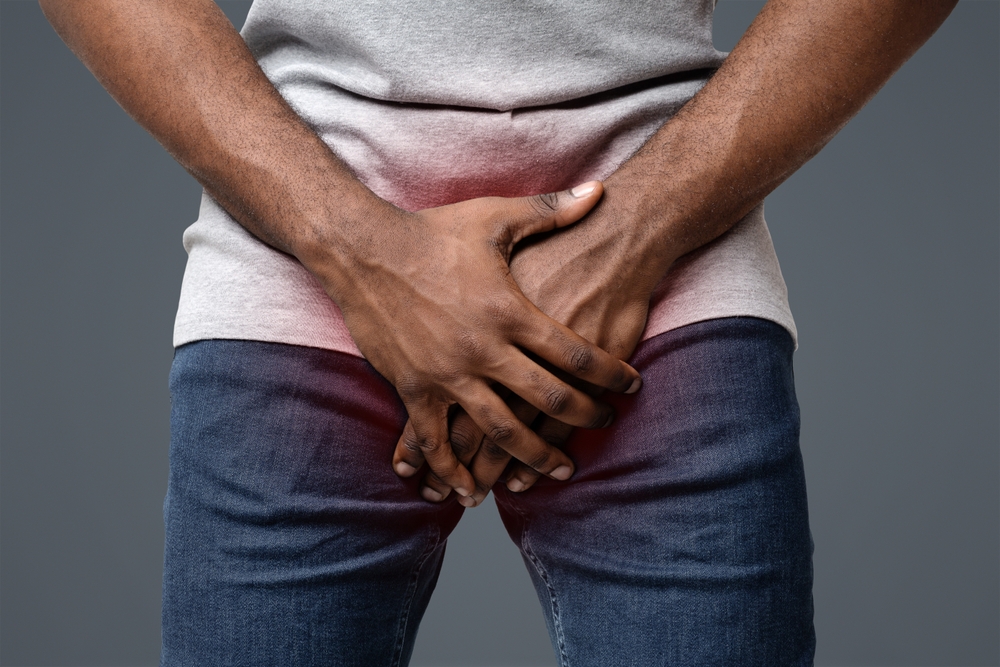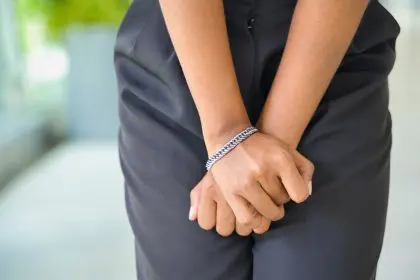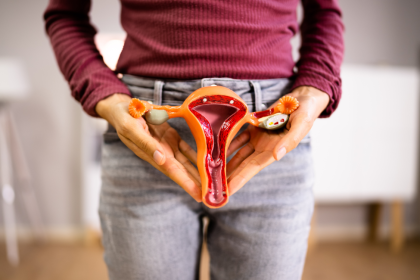You felt that sudden, sharp twinge while lunging for a tennis ball, sprinting on the track, or maybe just taking an awkward step off the curb. Now, weeks later, that nagging pain in your inner thigh is still haunting your every move. If this sounds familiar, you might be dealing with more than just a minor pull—you could be facing a groin strain that deserves way more attention than you’re giving it.
Most of us brush off groin discomfort as something that will magically disappear with a little rest. But that approach might be exactly why you’re still wincing every time you climb stairs or try to get out of your car. What’s really happening inside your body is far more complex, and understanding it could be the difference between a quick recovery and months of unnecessary suffering.
The invisible injury athletes fear most
Groin strains might not come with the dramatic flair of a twisted ankle or the visible bruising of a muscle tear, but they’re silently responsible for sidelining countless athletes and active individuals every year. These injuries account for up to 18% of all sports-related injuries, making them one of the most common reasons athletes find themselves unexpectedly benched.
What makes groin strains particularly insidious is their tendency to seem manageable at first. The initial sharp pain might subside to a dull ache, tricking you into thinking you’re healing when you’re actually setting yourself up for a longer recovery by returning to activity too soon. This false sense of improvement leads many to push through the pain, transforming what could have been a four-week recovery into a chronic condition that lingers for months.
Unlike more obvious injuries, the muscles in your groin—the hip adductors connecting your inner thighs to your lower abdomen—work quietly behind the scenes in almost every movement you make. When these muscles are overstretched or torn, the impact ripples through your entire mobility system, affecting everything from your walking gait to your core stability.
The three stages nobody tells you about
Not all groin strains are created equal, and understanding the severity of your injury is crucial for proper recovery. Medical professionals classify these strains into three distinct grades, each with its own recovery timeline and treatment needs.
Grade 1 strains involve minor stretching or micro-tears in the muscle fibers. You’ll feel discomfort, but you can usually still move around with some pain. Many people mistakenly believe they can “walk off” these mild strains, but even these require proper rest to prevent progression to more serious injury.
Grade 2 strains represent moderate damage with partial tearing of muscle fibers. The pain becomes more pronounced, often accompanied by swelling and significant discomfort when attempting to lift your leg or flex your hip. These injuries demand respect and patience, typically requiring several weeks of dedicated recovery time.
Grade 3 strains are severe tears that can even involve complete muscle rupture. The pain is intense and often debilitating, with visible bruising and swelling developing within hours of the injury. These serious injuries sometimes require surgical intervention and can take months to heal properly.
Without proper medical assessment, many people underestimate their injury grade, leading to premature returns to activity and repeated setbacks. That persistent pain you’ve been experiencing for weeks might be your body’s way of telling you that your self-diagnosis was overly optimistic.
The warning signs your body is sending
Your body has a sophisticated communication system, and when it comes to groin strains, it’s sending signals you need to decode correctly. Beyond the obvious pain in your inner thigh, there are several other symptoms that indicate you’re dealing with more than just temporary discomfort.
Mobility limitations are perhaps the most telling sign. If you find yourself struggling with everyday movements like bringing your knee toward your chest, climbing stairs, or even just getting in and out of your car, your groin strain is significantly affecting your functional capacity.
Muscle weakness that wasn’t there before the injury suggests that the damaged muscles are unable to generate their normal force. This weakness can manifest as a feeling of instability when standing on one leg or difficulty maintaining balance during normal activities.
Muscle spasms that come seemingly out of nowhere represent your body’s protective mechanism. These involuntary contractions are your muscles trying to prevent further damage by limiting movement, essentially putting up their own “do not disturb” sign that you should heed.
Visible swelling and bruising, particularly with more severe strains, provide clear evidence of internal damage. The discoloration comes from bleeding within the tissue, while swelling results from your body rushing inflammatory cells to the area to begin repairs.
The activities secretly making it worse
What you do in the days and weeks following a groin strain can dramatically influence your recovery timeline. Unfortunately, many people unknowingly engage in activities that aggravate their injury and delay healing.
High-impact exercises like running, jumping, or any sport involving sudden direction changes place tremendous stress on healing groin muscles. Even if the pain seems manageable during these activities, you’re likely causing microscopic re-injury with each movement.
Stretching too aggressively or too soon is another common mistake. While gentle movement is eventually beneficial for recovery, forcing a painful stretch on injured tissues can tear healing fibers and reset your recovery clock to day one.
Sitting for extended periods might seem safe, but it actually creates shortened, tight muscles and reduces blood flow to the injured area. The resulting stiffness can make your discomfort worse when you eventually stand up and try to move normally.
Ignoring core weakness often accompanies groin injuries, creating a vicious cycle. When your core muscles aren’t properly supporting your pelvis, your groin muscles must work harder to maintain stability, placing them under additional stress even during basic movements.
The recovery protocol nobody follows correctly
The path to healing a groin strain follows a specific progression that shouldn’t be rushed or modified based on impatience. The initial acute phase demands the classic RICE approach—rest, ice, compression, and elevation—to control inflammation and prevent further damage.
Rest doesn’t mean complete immobility but rather avoiding activities that trigger pain. Gentle walking and basic daily movements are usually acceptable and can actually promote blood flow to the injured area. Ice should be applied for 15-20 minutes every few hours during the first 72 hours to reduce swelling and pain.
Compression through supportive wraps or shorts helps minimize fluid buildup in the injured tissues while providing a sense of stability during movement. Elevation, though more challenging for groin injuries than extremities, can be achieved by lying down with your hips slightly elevated on pillows.
Over-the-counter pain medications like ibuprofen or naproxen can help manage discomfort and reduce inflammation during the initial recovery phase. However, these shouldn’t be used to mask pain completely, as pain serves as an important guide for activity limitation.
As acute symptoms subside, gentle stretching and progressive strengthening exercises become crucial for rebuilding tissue resilience. These should begin with basic isometric contractions and gradually progress to more dynamic movements as your healing advances.
The comeback strategy that actually works
Returning to full activity after a groin strain requires a methodical approach that respects your body’s healing timeline. Rushing this process is the most common reason these injuries become chronic problems that plague athletes for entire seasons.
The first rule of successful comeback is pain monitoring. Any exercise that produces sharp pain—rather than mild discomfort—is a signal that the tissue isn’t ready for that level of stress. A good guideline is that discomfort should not exceed 3 on a 10-point scale during rehabilitation exercises.
Progressive loading is the cornerstone of effective rehabilitation. This means gradually increasing the demands on your healing tissues through carefully selected exercises that challenge the muscle without overwhelming it. This methodical progression teaches the muscle to handle stress again while encouraging proper remodeling of the injured fibers.
Balance and proprioception training are often overlooked aspects of groin strain recovery. Exercises that challenge your stability help restore the neuromuscular connections between your brain and the injured area, reducing the risk of compensation patterns that could lead to future injuries.
Sport-specific movement reintegration should be the final phase of your return, gradually introducing the actions your activity demands but in a controlled, progressive manner. This might mean practicing cutting movements at 50% speed before attempting them at full intensity, or performing soccer kicks with limited force before returning to powerful shots.
Groin strains might not be the most visible injuries, but their impact on your mobility and quality of life can be profound. By understanding the true nature of these injuries and respecting the healing process, you can transform what might have become a persistent problem into a temporary setback on your fitness journey. Your groin muscles might be hidden from view, but giving them the attention and care they deserve will pay dividends in your return to pain-free movement.















